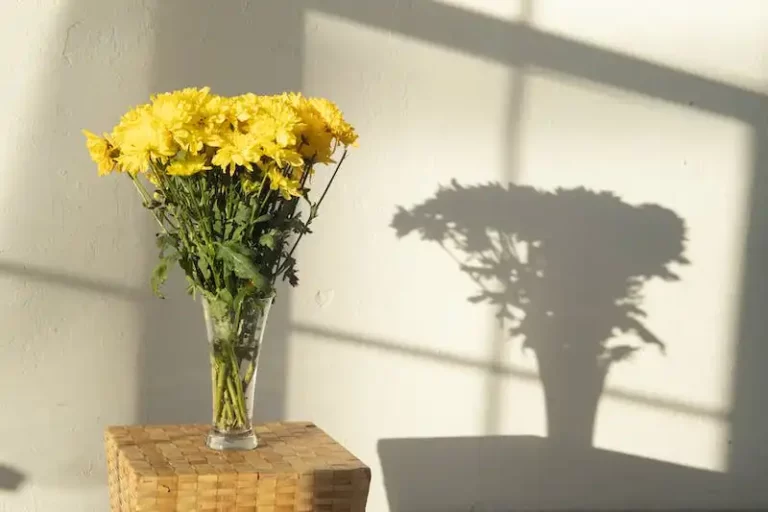The Dieffenbachia, also known as Dumb Cane or Leopard Lily, is a popular houseplant that many plant enthusiasts are looking to add to their collection. It is absolutely stunning with its large, variegated leaves that can reach up to several inches in width. Dieffenbachias are relatively easy to care for, making them a great choice for both beginner and experienced plant owners.
This tropical plant is native to the rainforests of Central and South America, where it grows in a humid habitat. In order to recreate its natural environment, Dieffenbachias prefer high humidity levels. Moss or a humidifier can be used to increase humidity levels around the plant.
Propagating Dieffenbachias can be done in a few different ways. One method is by taking stem cuttings and rooting them in water or a well-draining soil mix. Another method is by dividing the plant into sections. It is recommended to wash the cutting or division to remove any bacteria or pests that may be present.
When it comes to planting the Dieffenbachia, it’s important to choose a well-draining potting mix. Some plant owners prefer to use a mix of peat moss, perlite, and sand to ensure proper drainage. Additionally, adding bone meal to the soil can provide the plant with extra nutrients. Dieffenbachias can tolerate a wide range of light conditions, but they prefer bright, indirect sunlight. It’s best to place them near a window where they can receive filtered light.
While the Dieffenbachia is a beautiful plant, it’s important to note that all parts of the plant are toxic if ingested. Therefore, it’s crucial to keep it away from children and pets, especially dogs, as it can cause oral irritation and swelling. If any part of the plant is accidentally ingested, immediate medical attention should be sought.
The Dieffenbachia is known for its reputation of turning yellow. This can be a sign of improper care or environmental stress. Common reasons for yellow leaves include overwatering, underwatering, too much or too little sunlight, and temperature fluctuations. Regularly wiping the leaves with a damp cloth can help remove dust and keep them looking their best.
In summary, Dieffenbachia Dumb Cane Leopard Lily is a popular houseplant that is relatively easy to care for. It prefers high humidity levels and bright, indirect sunlight. Propagation can be done via stem cuttings or division. Although it is a beautiful plant, it is important to handle it with caution as all parts are toxic if ingested. Regular care and attention will help keep your Dieffenbachia healthy and thriving.
How to Plant and Grow Dieffenbachia
Dieffenbachia, also called Dumb Cane or Leopard Lily, is a popular houseplant known for its large and vibrant foliage. Growing Dieffenbachia can be a rewarding experience, as they are relatively easy to care for and can thrive in a variety of environments. However, there are some important steps to follow to ensure their successful growth.
Choosing the Right Spot
Dieffenbachia plants prefer bright, indirect light, so choose a location with moderate to bright lighting. Avoid placing them in direct sunlight, as it can scorch their leaves. They can tolerate lower light conditions as well, but their growth may be slower and the leaves less vibrant.
Caring for Dieffenbachia
Dieffenbachia requires well-draining soil, so make sure to use a potting mix specifically designed for indoor plants. Water the plant thoroughly but less frequently, allowing the top inch of soil to dry out before the next watering. Overwatering can cause root rotting, while underwatering can lead to yellowing and drooping leaves.
Keep the humidity levels high around Dieffenbachia by occasionally misting the leaves with water or placing the pot on a tray filled with water and pebbles. This will help prevent the tips of the leaves from browning and curling.
Feed your Dieffenbachia with a balanced, water-soluble fertilizer once a month during the growing season (spring and summer). Follow the package instructions for the correct dosage and frequency.
Propagating Dieffenbachia
If you want to propagate your Dieffenbachia, it’s relatively easy to do so. One method is to take stem cuttings from the parent plant. Cut a stem just below a node and remove the lower leaves. Place the cutting in a container filled with moist potting soil or water until roots develop. Once the roots are established, you can plant the cutting in a pot.
Another method is by dividing the plant. Simply remove the plant from its pot and separate the roots into two or more parts. Then, replant each part in its own pot.
Potting and Support
Choose a pot that is large enough to accommodate the plant’s root system and provide stability. Make sure the pot has drainage holes to prevent overwatering. Use a quality potting mix or a mix of peat moss, perlite, and vermiculite to ensure good drainage.
Dieffenbachia can grow quite tall, so occasionally you may need to provide support for the stems. You can use a stake or a support cage to help the plant maintain an upright position.
Potential Problems
Dieffenbachia plants are relatively pest-free, but they can occasionally suffer from common houseplant pests such as scale insects or spider mites. If you notice any signs of infestation, treat the plant with an appropriate insecticide or use natural remedies like neem oil.
Take caution when handling Dieffenbachia, as its sap can irritate the skin and may cause allergic reactions. Make sure to wash your hands after handling the plant or use gloves to protect your skin.
In conclusion, growing Dieffenbachia can be a rewarding experience if you follow the necessary steps. With the right care and attention, your Dieffenbachia plants will thrive, producing lush and vibrant foliage that adds a touch of beauty to any indoor space.
Dieffenbachia Overview
The Dieffenbachia plant, also known as Dumb Cane or Leopard Lily, is a vibrant houseplant that is native to the warm and humid regions of Central and South America. It gets its common name, Dumb Cane, from the plant’s toxic sap that can temporarily impair speech if ingested.
Dieffenbachia plants are popular indoor plants due to their attractive foliage. The leaves feature stunning patterns and splotches, depending on the variety, with vibrant green and white coloration. Some varieties, such as Dieffenbachia picta, have yellow margins on the leaves, adding to their aesthetic appeal.
When properly cared for, Dieffenbachia plants can grow to be quite large. They have a quick growth rate and can reach a height of 3 feet or more within a few months. The plant grows from a central stalk or stump, with multiple stems spreading out from it. As the plant grows, the lower leaves will naturally die off, but it will continue to produce new leaves from the top.
In order to thrive, Dieffenbachia plants require bright but indirect light. They can tolerate lower light conditions, but too much direct sunlight can scorch their leaves. It is important to place them in a location that receives filtered or partial sunlight. These plants also prefer warm and humid environments, so misting the leaves or using a humidifier can help to maintain the required humidity levels in homes with dry air.
Dieffenbachia plants should be watered thoroughly, allowing the soil to dry out slightly between waterings. Overwatering can lead to root rot, so it is important to ensure proper drainage and avoid letting the plant sit in standing water. During the growing season, which is typically spring and summer, feeding the plant with a balanced fertilizer once a month can promote healthy growth.
The propagation of Dieffenbachia plants is most commonly done through stem cuttings. The cuttings should be taken from mature plants and dipped in a rooting hormone solution to encourage root development. After a few weeks, the cuttings will develop roots and can be transferred into individual pots.
It is important to note that Dieffenbachia plants are toxic to both humans and pets. The sap contains calcium oxalate crystals, which can irritate the skin and mucous membranes if it comes into contact with them. If ingested, the crystals can cause swelling and make it difficult to speak. It is advised to keep these plants out of reach of children and pets or to choose alternative houseplants if there are concerns about accidental exposure.
In conclusion, Dieffenbachia plants are a beautiful addition to indoor spaces, providing vibrant foliage and adding a touch of nature to any room. Proper care and knowledge about their specific needs, such as light, humidity, watering, and feeding, are necessary to ensure their health and growth. By following a simple care guide, Dieffenbachia plants can thrive and bring joy to their owners for years to come.
Where to Plant Dieffenbachia
Dieffenbachia, also known as Dumb Cane or Leopard Lily, is a popular plant known for its lush green foliage and unique markings. When deciding on a location to plant your Dieffenbachia, there are a few important factors to consider.
Firstly, Dieffenbachia plants prefer bright, indirect sunlight. Placing them near a window that receives filtered light or in a well-lit room is ideal. However, direct sunlight can cause the leaves to yellow and suffer, so it’s important to find the right balance.
Secondly, temperature is crucial for the optimal growth of Dieffenbachia. These plants thrive in temperatures between 65-75 degrees Fahrenheit (18-24 degrees Celsius). They can tolerate slightly lower temperatures for short periods, but prolonged exposure to colder temperatures can cause leaf droop and damage.
Dieffenbachia plants also require well-draining soil. A mix of potting soil and perlite or vermiculite works well. Avoid using heavy soils that can retain too much moisture, as this can lead to root rot. Regular watering is necessary, but the soil should be allowed to dry out slightly between waterings. Overwatering can cause the roots to rot and the plant to suffer.
When it comes to humidity, Dieffenbachia plants prefer a moderately humid environment. They can tolerate lower humidity levels, but if the air is too dry, the tips of the leaves may turn brown. To increase humidity, you can place the pot on a tray filled with water and pebbles or use a humidifier.
Lastly, it’s important to consider the space requirements of the Dieffenbachia plant. These plants can grow quite large, so make sure to provide enough room for their growth. If the plant becomes leggy or floppy, you can trim the stem back to encourage new growth and a bushier appearance. Propagating Dieffenbachia is a quick and easy process using stem cuttings.
Overall, Dieffenbachia plants are versatile and relatively easy to care for. They can thrive in a variety of conditions, but they do require specific lighting, temperature, and moisture levels to truly flourish. By providing the right environment, you can enjoy the beauty of their lush foliage and unique leopard-like spots for many years to come.



